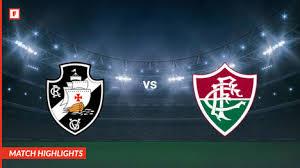Exploring the Historic Rivalry: Vasco da Gama vs Fluminense

Introduction
The rivalry between Vasco da Gama and Fluminense is one of the most storied in Brazilian football, often referred to as the “Clássico Carioca.” This fierce competition has significant historical and cultural relevance in Brazil, drawing passionate fans from both sides and impacting the landscape of Brazilian sports for generations. With recent matches rekindling the rivalry, the significance of their encounters remains potent among football enthusiasts.
Historic Background
Vasco da Gama and Fluminense, both based in Rio de Janeiro, have a long-standing rivalry that dates back to their first clash in 1909. The matches are not only a test of sporting skills but also an embodiment of the rich traditions and identities that both clubs represent. Vasco da Gama, established in 1898, is known for its working-class roots and also holds a strong Afro-Brazilian heritage, while Fluminense, founded in 1902, is often associated with the elite segment of society. This overlap of social classes adds a unique layer to their encounters.
Recent Encounters
In recent years, the rivalry has seen heightened tensions, especially during the 2023 Campeonato Brasileiro Série A season, where both teams were vying for a better position in the league. The matches are always closely contested, with fierce competition both on and off the pitch. In their latest meeting, Fluminense narrowly defeated Vasco da Gama with a score of 2-1, further intensifying the rivalry and keeping Fluminense ahead in their series of matches this year. Fans from both clubs packed the stands, showcasing the deep-rooted passion and loyalty embedded in this historic clash.
Fan Culture and Significance
The fan culture surrounding Vasco da Gama and Fluminense is pivotal to understanding the essence of this rivalry. Each match day, the atmosphere is electric, with supporters displaying choreographed banners, chants, and a multitude of colours representing their teams. It’s a unifying force for the fans and a spectacle that highlights the cultural heritage of Brazilian football. Such encounters also serve to reinforce community ties and regional pride.
Conclusion
As Vasco da Gama and Fluminense continue to battle on the field, their rivalry remains one of the cornerstones of Brazilian football culture. Looking ahead, the matches promise to not only uphold traditions but also shape the narratives of future generations of football in Brazil. With the Copa do Brasil approaching, the anticipation for the next clash grows, suggesting that the rivalry’s significance is far from waning. For fans and players alike, the clashes between Vasco da Gama and Fluminense embody a fierce desire for victory that transcends mere competition, making each match a memorable chapter in Brazilian football history.
